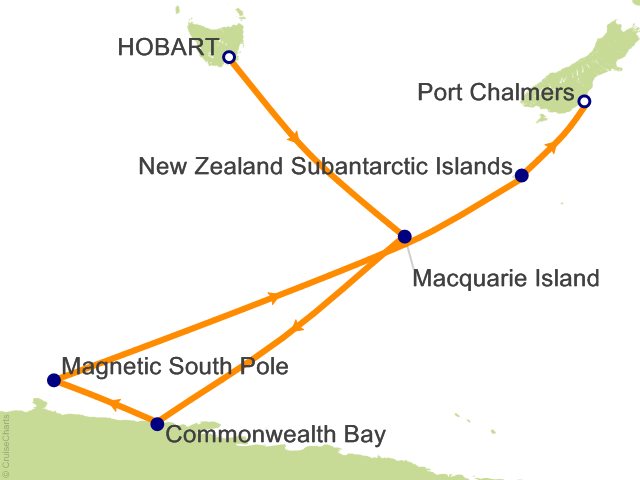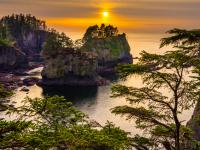As Macquarie Island slips over the horizon, keep watch for wandering, grey-headed, black-browed, and light-mantled albatross, which may follow the ship to bid you farewell as you continue south. Close observers may notice a subtle change in the character of the sea as you cross the Antarctic Convergence. Beyond this zone where the waters of the north and south mix, the sea surface temperature drops by about 4C (39F), signaling your entry into the Antarctic. Mawson reported spotting 'innumerable' birds in these waters, so keep watch for porpoising penguins, flocks of fluttering Antarctic petrels, or perhaps the more solitary snow petrel. You're not far from the Antarctic Circle, so your first iceberg can't be far away! Sea days are a great opportunity for some R & R as you digest your subantarctic experiences and prepare for the next phase of your voyage. Relax and unwind your way, perhaps meeting newfound friends at the bar, treating yourself to a sauna, or editing some images in the comfort of your cabin. As we continue along the path taken by the Aurora in 1911, join your expedition team in the lecture room for presentations about Antarctic ice, wildlife, and of course the remarkable story of the Australasian Antarctic Expedition. Led by Australian geologist and explorer Sir Douglas Mawson, the expedition successfully charted vast swathes of previously explored Antarctic coastline, and over 6,000 kilometers of the interior. Despite its tremendous contribution to the advancement of Antarctic science, the expedition is perhaps best known for its nail-biting tales of triumph and tragedy. Hear the story of the extraordinary sledge journey undertaken by Mawson, Ninnis, and Mertz, and rediscover why this remains one of the most incredible polar survival stories of all time. ...
Read More




 Track this Cruise.
Track this Cruise.  Favorite this Cruise and receive Price Alerts when the rates go up or down.
Favorite this Cruise and receive Price Alerts when the rates go up or down.












